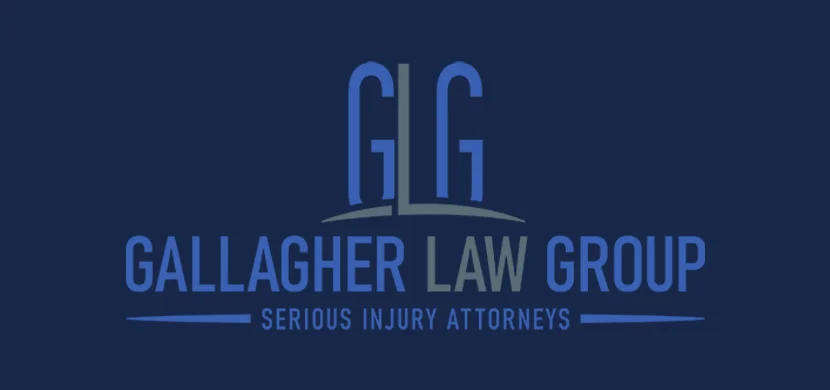After a car accident in Arizona, one of the most pressing questions victims face is: “How much is my injury claim worth?” Whether you’ve been injured on Phoenix’s congested freeways, Tucson’s busy streets, or rural highways across the Grand Canyon State, understanding the potential value of your claim is essential for making informed decisions about your case.
While no attorney can guarantee a specific outcome, this comprehensive guide explains the factors that influence car accident claim values in Arizona and provides insight into how these claims are evaluated and resolved.
Factors That Determine Car Accident Claim Value in Arizona
Medical Expenses
Medical costs typically form the foundation of any injury claim valuation. In Arizona, recoverable medical expenses include:
- Emergency room and hospital bills
- Physician services
- Surgical costs
- Prescription medications
- Physical therapy and rehabilitation
- Diagnostic tests (X-rays, MRIs, CT scans)
- Medical equipment and devices
- Future medical care for permanent injuries
According to the Arizona Department of Health Services, the average hospital stay following a car accident costs between $15,000 and $60,000, depending on injury severity, with trauma center services substantially higher.
Lost Income and Earning Capacity
When injuries prevent you from working, compensation may include:
- Wages lost during recovery
- Lost benefits and opportunities
- Reduced future earning capacity
- Lost business opportunities for self-employed victims
The Phoenix Personal Injury Attorneys at GLG note that lost earnings claims require thorough documentation, including employment records, tax returns, and often expert testimony for future income projections.
Property Damage
Beyond vehicle repair or replacement value, property damage claims may include:
- Personal property damaged in the accident
- Rental car expenses
- Diminished value of repaired vehicles
- Aftermarket additions and custom features
Pain and Suffering
Non-economic damages for pain and suffering compensate for:
- Physical pain and discomfort
- Emotional and psychological distress
- Anxiety, depression, and PTSD
- Loss of enjoyment of life
- Sleep disturbances
- Impact on relationships
Unlike some states, Arizona places no statutory cap on pain and suffering damages.
Permanent Disability or Disfigurement
Permanent injuries that cause lasting disability or visible scarring typically increase claim values substantially, accounting for:
- Lifetime limitations and adaptations
- Psychological impact of disfigurement
- Changes to life expectancy
- Necessary home and vehicle modifications
- Long-term care needs
Arizona-Specific Laws Affecting Claim Value
Several Arizona laws directly impact how claims are valued:
Pure Comparative Negligence
Arizona follows a “pure comparative negligence” system under A.R.S. § 12-2505. This means:
- You can recover damages even if partially at fault
- Your compensation is reduced by your percentage of fault
- If you were 30% responsible, you would receive 70% of the total damages
This differs significantly from states with modified comparative negligence or contributory negligence rules that might bar recovery entirely.
Mandatory Insurance Requirements
Arizona’s required minimum liability coverage is:
- $25,000 bodily injury liability per person
- $50,000 bodily injury liability per accident
- $15,000 property damage liability
According to the Arizona Department of Insurance and Financial Institutions, these minimums often prove insufficient for serious accidents, making underinsured motorist coverage crucial for maximizing recovery.
No-Fault vs. Fault System
Arizona operates under a “fault” insurance system, meaning the at-fault driver’s insurance is primarily responsible for covering damages. This contrasts with “no-fault” states where each driver’s insurance covers their own losses regardless of fault.
Recent Arizona Car Accident Settlement Examples
While every case is unique, recent Arizona settlements provide context for claim valuations:
April 2025 – Severe Injury Multi-Vehicle Crash
The Arizona Republic reported a $2.7 million settlement for a Phoenix resident who suffered spinal injuries requiring multiple surgeries following a three-car collision on Loop 101. The case involved complex liability among multiple drivers and insurance policies. Medical expenses exceeded $450,000, with projected future treatment costs of $350,000 and lost earning capacity of approximately $850,000.
March 2025 – Moderate Injury Intersection Accident
According to AZ Family, a case involving a T-bone collision at a Scottsdale intersection resulted in a $175,000 settlement. The victim suffered a broken collarbone, concussion, and soft tissue injuries requiring three months of treatment and recovery. The settlement included approximately $45,000 in medical expenses, $18,000 in lost wages, and $112,000 for pain and suffering.
February 2025 – Minor to Moderate Injuries
ABC15 Arizona covered a rear-end collision case in Tempe that settled for $65,000. The victim experienced whiplash, requiring physical therapy and chiropractic treatment over six months. The settlement covered $22,000 in medical bills, $8,000 in lost wages, and $35,000 for pain and suffering.
Types of Damages Available in Arizona
Arizona law recognizes several categories of damages:
Economic Damages
These represent financial losses with specific dollar values:
- Medical expenses (past and future)
- Lost income and benefits
- Property damage
- Household services
- Other out-of-pocket expenses
Non-Economic Damages
These compensate for intangible losses:
- Physical pain and suffering
- Emotional distress
- Loss of enjoyment of life
- Loss of consortium (impact on marital relationship)
- Inconvenience and lifestyle changes
Punitive Damages
In rare cases involving particularly egregious conduct, punitive damages may be available. According to GLG’s Arizona Injury Value Guide, these typically require evidence of:
- Intentional misconduct
- Gross negligence
- Willful disregard for safety
- Driving under the influence
Insurance Company Valuation Methods
Insurance companies in Arizona typically use several approaches to value claims:
Multiplier Method
This common approach:
- Takes the total medical expenses and lost wages (special damages)
- Applies a multiplier between 1.5 and 5, depending on injury severity
- Adds property damage and other economic losses
- Adjusts for comparative negligence
Per Diem Approach
This method:
- Assigns a daily dollar value to pain and suffering
- Multiplies by the number of days affected
- Adds to economic damages
- Often used for claims with clearly defined recovery periods
Computer Analysis
Many insurers now use software programs like Colossus that:
- Analyze injury codes and treatment patterns
- Compare to similar cases in their database
- Apply regional adjustments for Arizona claims
- Consider attorney representation and litigation history
Factors That May Reduce Claim Value
Several circumstances can decrease the value of Arizona car accident claims:
Pre-existing Conditions
While Arizona’s “eggshell skull” rule requires defendants to take victims as they find them, pre-existing conditions often complicate claims when:
- Injuries involve the same body parts as previous conditions
- Medical records don’t clearly distinguish new from old injuries
- Treatment appears excessive compared to the accident severity
Gaps in Treatment
Insurance adjusters are suspicious of:
- Delays seeking initial treatment
- Unexplained breaks in the treatment timeline
- Failure to follow medical recommendations
Social Media Activity
Insurance investigators routinely monitor claimants’ social media for:
- Photos or videos contradicting injury claims
- Check-ins at locations inconsistent with claimed limitations
- Posts suggesting better function than reported to doctors
Recorded Statements
According to GLG Catastrophic Injury Attorneys, statements to insurance adjusters often:
- Inadvertently minimize symptoms or limitations
- Create inconsistencies in the injury narrative
- Lock victims into descriptions before full injuries are known
Valuation Considerations for Specific Injuries
Different injury types command different values in Arizona:
Soft Tissue Injuries
Common whiplash and muscle strain cases typically range from $10,000 to $100,000 depending on:
- Treatment duration and response
- Diagnostic findings (MRI evidence vs. clinical diagnosis only)
- Permanent limitations
- Impact on daily activities
Fractures and Orthopedic Injuries
Broken bones generally range from $50,000 to $250,000+ based on:
- Which bones are affected
- Whether surgery was required
- Hardware installation (screws, plates, rods)
- Healing complications
- Permanent limitations
Traumatic Brain Injuries
TBI cases vary dramatically from $100,000 to millions depending on:
- Severity (mild, moderate, severe)
- Cognitive and functional impacts
- Treatment requirements
- Ability to return to work
- Need for assistance with daily activities
Spinal Injuries
Back and neck injuries range widely:
- Disc herniations: $75,000 to $350,000+
- Spinal fusion surgeries: $250,000 to $1,000,000+
- Spinal cord injuries: $1,000,000 to $10,000,000+
The Timeline’s Impact on Value
How long it takes to resolve a claim can affect its value:
Settlement vs. Litigation Values
- Pre-lawsuit settlements typically yield 60-80% of potential trial value
- Filing a lawsuit often increases offers, even before trial
- Trial verdicts may be higher but involve greater risk and delay
Case Duration Considerations
According to the Arizona Superior Court in Maricopa County, the average timeframes are:
- Minor injury cases: 3-9 months to resolution
- Moderate injury cases: 9-18 months
- Severe injury or complex liability cases: 18-36+ months
Maximizing Your Claim’s Value
Several strategies can help maximize Arizona car accident claim values:
Thorough Documentation
- Seek prompt medical attention
- Follow all treatment recommendations
- Maintain a daily journal of symptoms and limitations
- Keep detailed records of all expenses and losses
- Take photographs of injuries as they heal
Expert Testimony
- Medical specialists to explain complicated injuries
- Economic experts for lost earning capacity
- Life care planners for future needs
- Accident reconstructionists for liability disputes
Comprehensive Damage Assessment
Ensure all damage categories are included:
- Future medical care and complications
- Lost opportunities and advancement
- Impact on hobbies and quality of life
- Psychological effects
- Family and relationship consequences
When to Consider Legal Representation
While minor accidents might be handled without an attorney, more serious injuries generally warrant legal representation. The Arizona State Bar Association notes that represented claimants typically receive settlements 3-4 times higher than unrepresented individuals, even after attorney fees.
Consider legal representation when:
- Injuries require more than minimal treatment
- Liability is disputed or shared
- Multiple parties are involved
- Insurance adjusters minimize or deny claims
- Permanent injuries or disabilities result
- Commercial vehicles are involved
- Government entities may share responsibility
Conclusion
While no formula can precisely predict an Arizona car accident claim’s value, understanding the factors that influence case valuation helps victims set realistic expectations and make informed decisions.
Each case presents unique circumstances that require individualized assessment. The examples provided offer general guidance, but specific case values depend on the particular facts, evidence, injuries, and legal issues involved.
For serious injuries, consulting with an experienced Arizona car accident attorney provides the most reliable case valuation based on your specific situation. Most reputable attorneys offer free initial consultations to discuss potential claim values and legal options.
References
- Arizona Revised Statutes § 12-2505. Comparative Negligence System.
- Arizona Department of Insurance and Financial Institutions. (2025). Auto Insurance Requirements.
- Arizona Department of Health Services. (2024). Trauma Center Costs and Statistics.
- Arizona Superior Court in Maricopa County. (2025). Civil Case Processing Statistics.
- Arizona Republic. (April 2025). Phoenix resident receives $2.7 million settlement for Loop 101 crash injuries.
- AZ Family. (March 2025). Scottsdale intersection accident results in $175,000 settlement.



